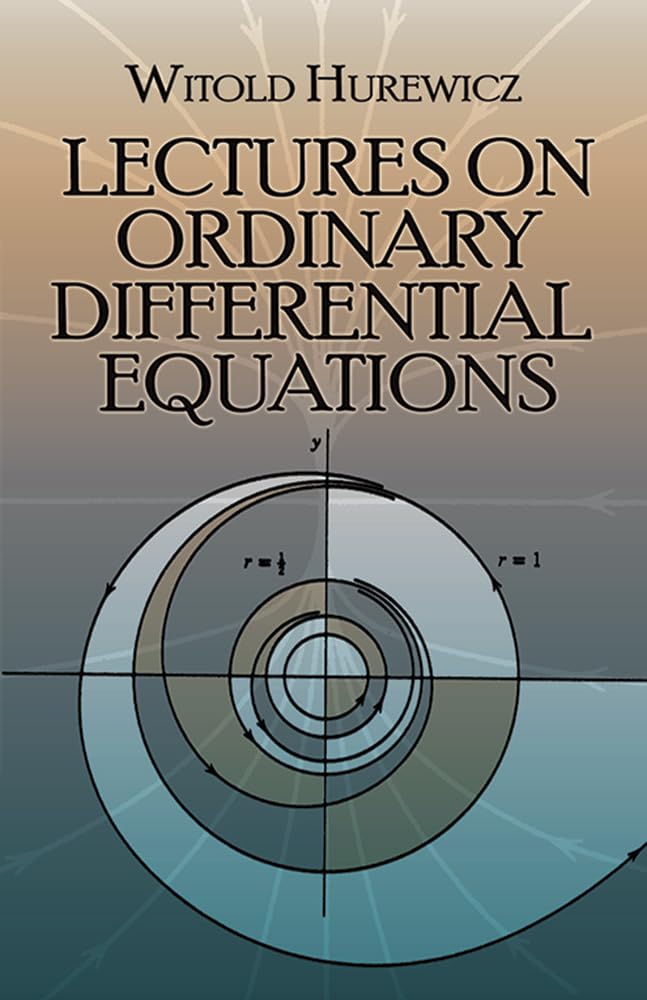

Dover Lectures on Ordinary Differential Equations
S**E
4-star
Book is quite good but not self explanatory enough.
A**N
Compact. Elegant. Vector/matrix notations. Peano existence theory.
Hurewicz's modern approach to ODE theory has one very surprising aspect. His existence theory is almost all based on the Peano approximation method, not the more popular Picard iteration method. (See Hurewicz pages 1-18 and 23-33 for the Peano method, and pages 18-22 for the Picard method.) This is even more surprising when you consider Hurewicz's strong reputation in abstract combinatorial topology.The old Peano method is typically considered not even worth mentioning in most ODE books, both old and modern. But during WW2, Hurewicz helped out with secret research on servomechanisms for the military, and this book was originally composed in 1943. (See wikipedia for details of his life.) So maybe these lectures arose somehow from that very practical work, which would have been easier with the Peano method because of the lack of computers at that time. (Hurewicz calls the Peano method the "Cauchy-Euler method".)This is the only book I know of which presents the Peano existence method in such detail in a modern way. Hurewicz uses vector and matrix notations, which were still new at the time. The only other detailed presentation of the Peano method I know of is Murray/Miller, " Existence Theorems for Ordinary Differential Equations ", pages 21-35, which is very old-fashioned.The uniqueness theory in this book is fairly standard, based on the Lipschitz condition for the force function, but it is done in a modern elegant fashion. (The ODE presentation by Serge Lang, " Fundamentals of Differential Geometry ", pages 67-88 is very modern and elegant, but is perhaps just a bit too abstract!)In Chapter 3, Hurewicz presents linear systems of ODEs, which have great practical importance in applications. He uses matrix notations to present the special form of solutions for this class of ODEs. He starts with homogeneous linear ODEs, which are of particular interest to me because they are directly applicable to the existence of parallel transport for affinely connected manifolds.Chapter 4 on "singularities of an autonomous system" sounds very much related to the servomechanism work which Hurewicz did, but he presents only two-dimensional cases. (When I was an undergraduate, this kind of theory was applied to dynamic systems such as population dynamics.)This book has all of the existence and uniqueness theory which is required for two important differential geometry applications. The first is parallel transport for general connections on differentiable fiber bundles. The second is the flows (i.e. integral curves) of vector fields on manifolds, including Lie groups in particular.Conclusion:This is a compact introduction to the Peano approximation method for ODE existence theory, using modern notation and concepts, followed by an elegant presentation of linear systems of ODEs, and then finally two chapters on basic autonomous systems. Existence Theorems for Ordinary Differential EquationsFundamentals of Differential Geometry
B**B
A very good book
Hurewicz was a seminal topologist, and also a very good analyst, so the Poincare-Bendixson theorem presented in the text is a perfect topic for him. The book is based on notes from a course of his.
Trustpilot
3 days ago
3 weeks ago